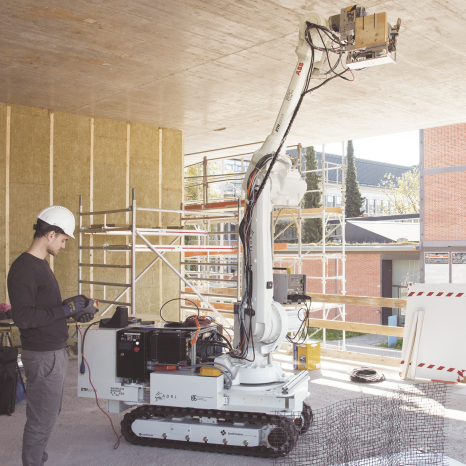Digital Fabrication To Revolutionize The Future Of Architecture
Poor construction management and substandard project vision can easily endanger the completion of any project. Several building projects still include inferior working conditions which are not eloquently sustainable. The world is constantly changing and with it the construction processes are also being developed. Construction processes that involve digital technologies ensure sustainable working conditions, productivity and sustainability. That’s not all, the integration of new technologies also enable the creation of fresh architectural expressions. The advent of digital fabrication has made it easier to use programmed computers as a medium of completing the projects successfully using digital designs.
Digital Building Culture
The potential of this digital building culture can be fully exploited with funding and institutional environments that facilitate proper interdisciplinary research. The process of digital fabrication unites the separate disciplines like robotics, control system engineering, materials science, computer science, structural design and architecture.
 Recently, the AAAS 2017 meeting in Boston was held in which the RMIT University, University of California, and Jane Burry amongst others explained the development in digital building culture. The detailed presentations they showcased at this event highlight the integration of digital technologies with building process, planning and design. The process of digital fabrication in itself is revolutionary and can successfully renovate the building industry.
Recently, the AAAS 2017 meeting in Boston was held in which the RMIT University, University of California, and Jane Burry amongst others explained the development in digital building culture. The detailed presentations they showcased at this event highlight the integration of digital technologies with building process, planning and design. The process of digital fabrication in itself is revolutionary and can successfully renovate the building industry.
Overcoming Challenges in Digital Fabrication
Assistant professor, Jonas Buchli at ETZ Zurich and private investigator in NCCR highlighted the expanded use of digital fabrication using domain specific robotic technology in prefabrication and construction sites.
He also demonstrated the various challenges that the researchers are going through in the integration and further development of digital technologies in varied fields of architecture. Digital fabrication and increased use of digital designs for higher quality projects can successfully transform the future of architecture.
Free Of Limitations
Digital fabrication has helped designers by unchaining them from the limitations of dimensional representational techniques. It has freed the designers from the various constraints of physical modeling and drawing.
This has helped them solve the various hindrances of extraneous factors like material and fabrication constraints, and environmental and structural optimization. The director of RMIT University in Australia demonstrated how the various opportunities for quality control, mass customization, variation, optimization, and automation can be explored.
Digital fabrication helps realize the potentialities of these opportunities in full scale construction projects. Burry also demonstrated examples of how innovation and research has successfully changed construction practices. For a better insight of development she will use case studies of Antonio Sagrada Familia.
3D printing digital fabrication enables building objects using layers of plastic or metal. However, the process of development in 3D printing has been slow and has till date only enabled small scale object printing.
The Associate Professor in Berkeley USA, Ronald Rael is devising new methods to overcome this challenge. He has been working on the project for quite some time, and has been able to develop new materials that will help overcome the challenge of costs and scales of 3D printing. Ronald demonstrated that sustainable resources amassed from waste streams derived for 3D printing in architecture will be a viable solution for overcoming the challenges.







